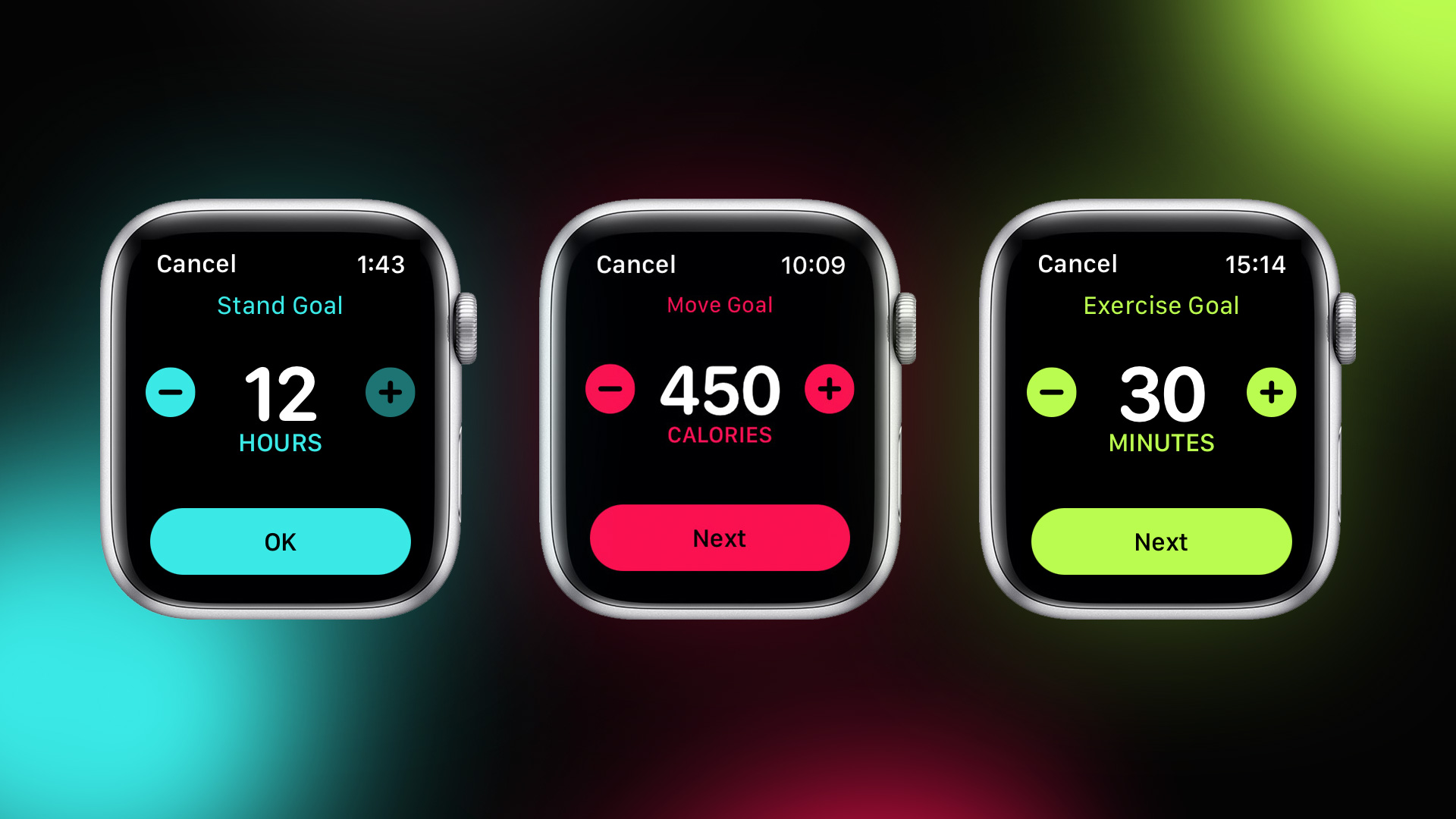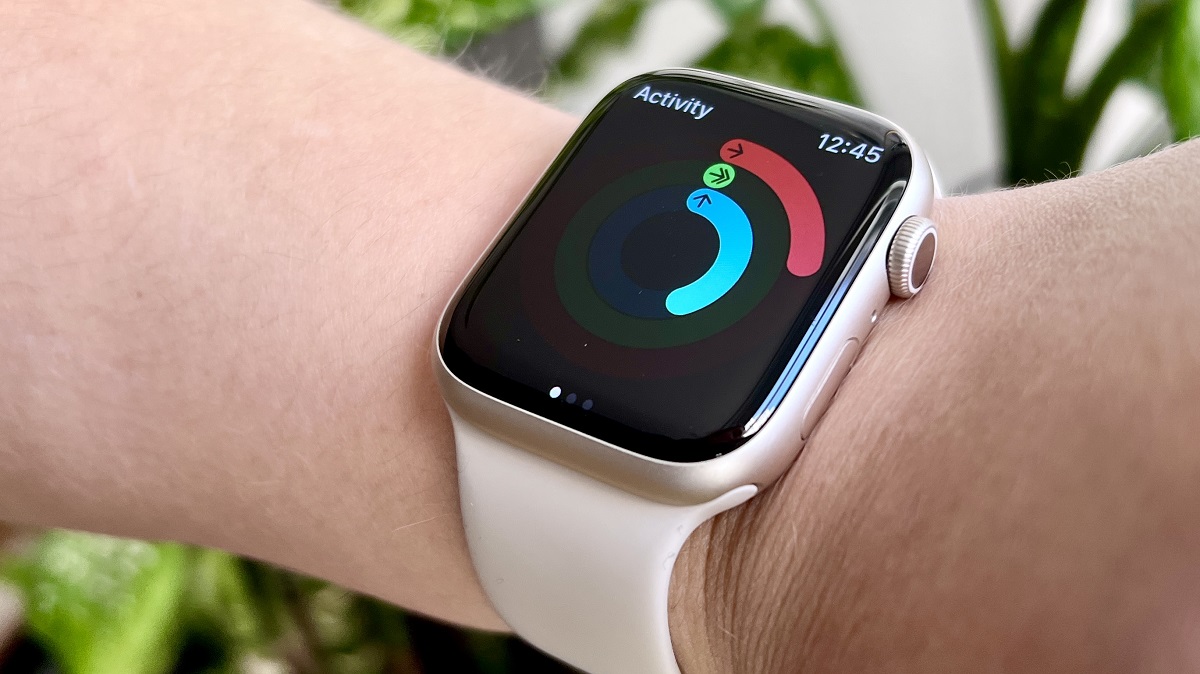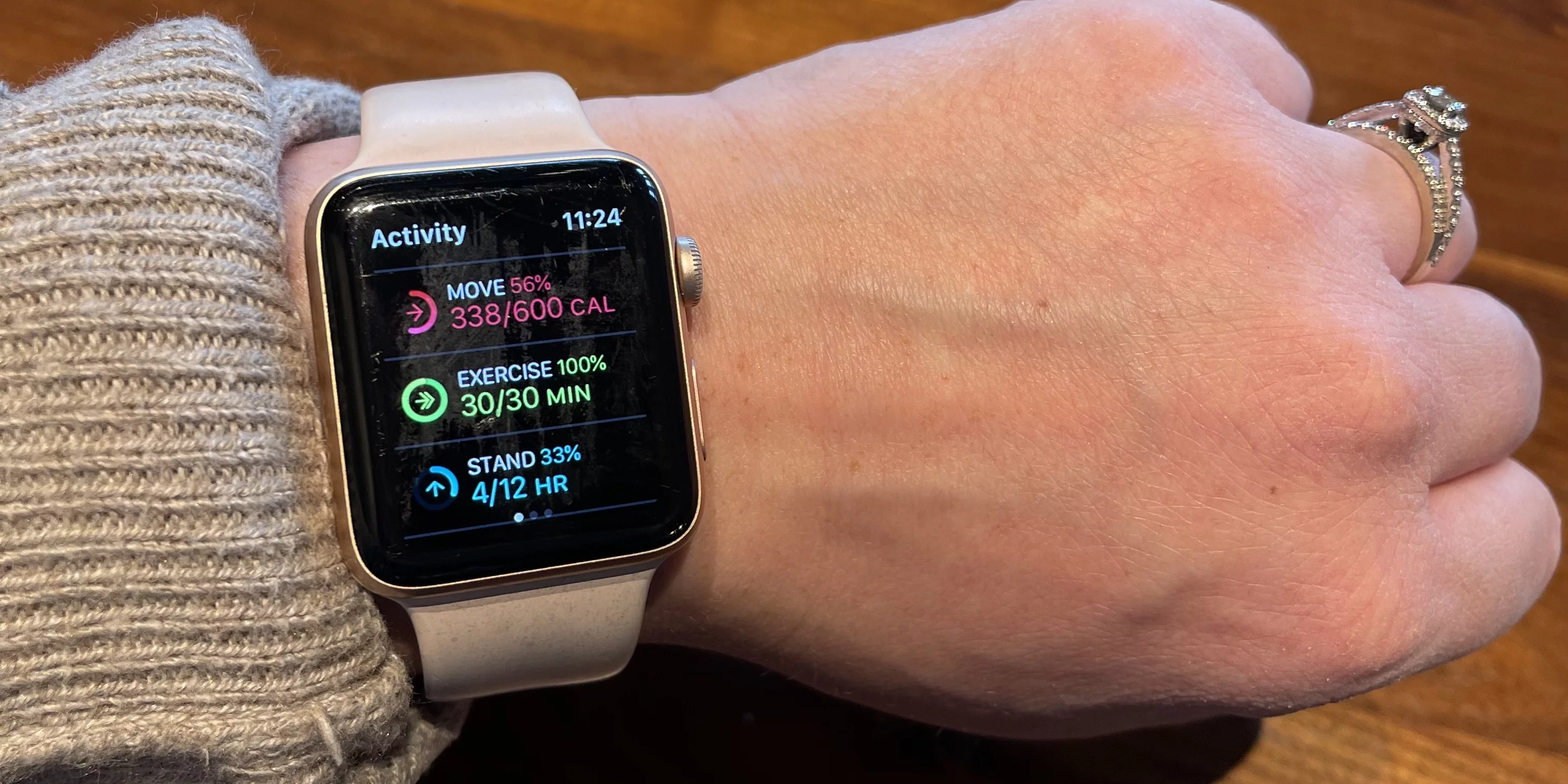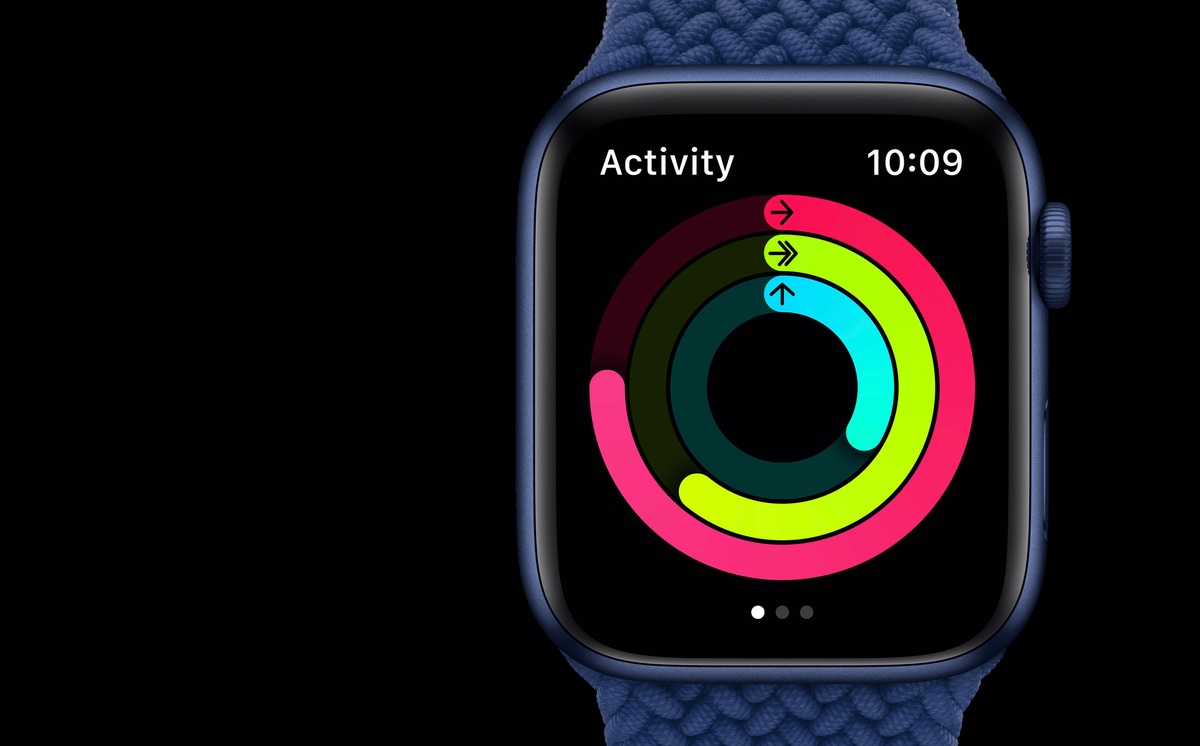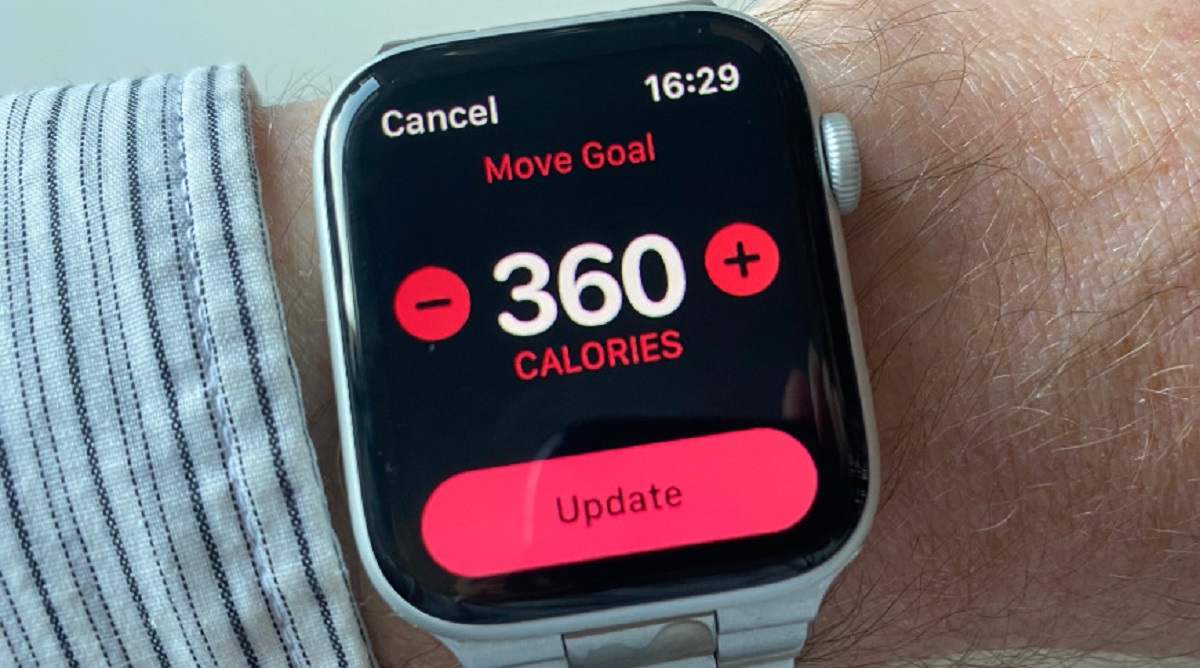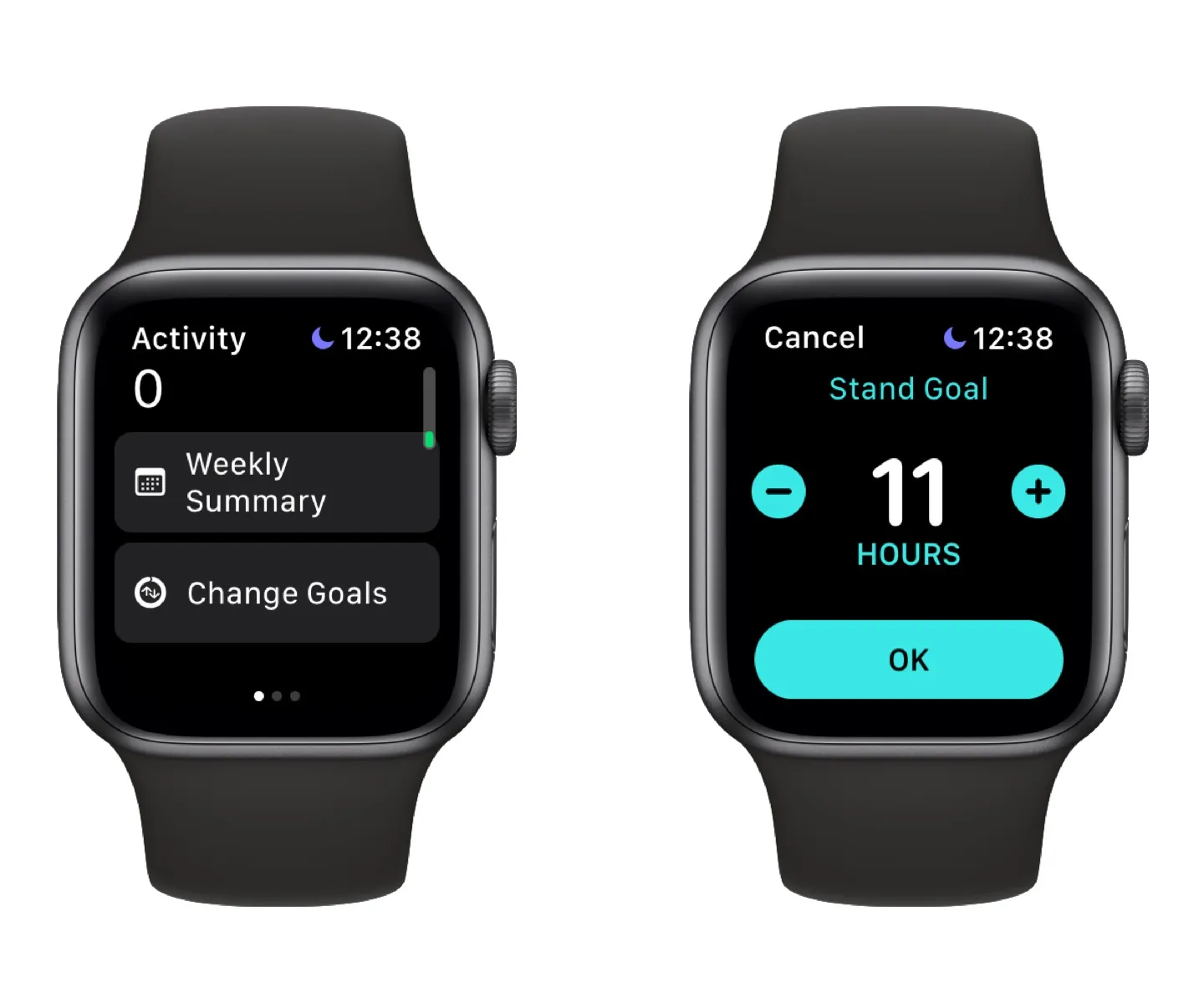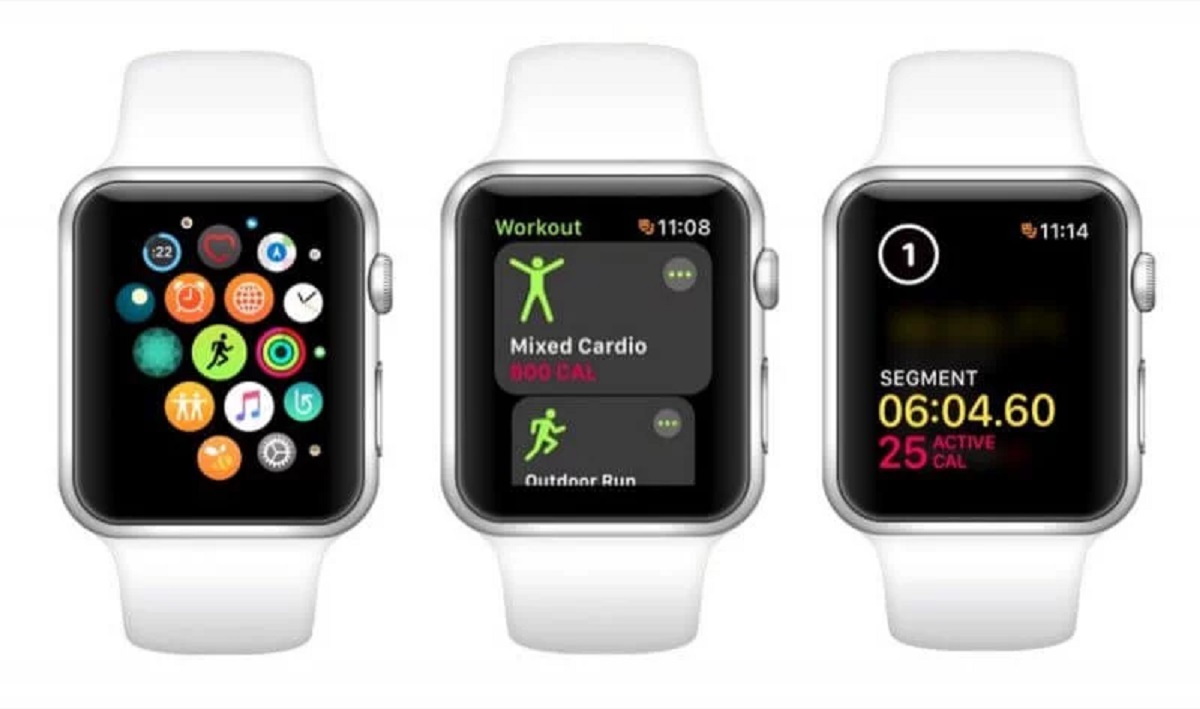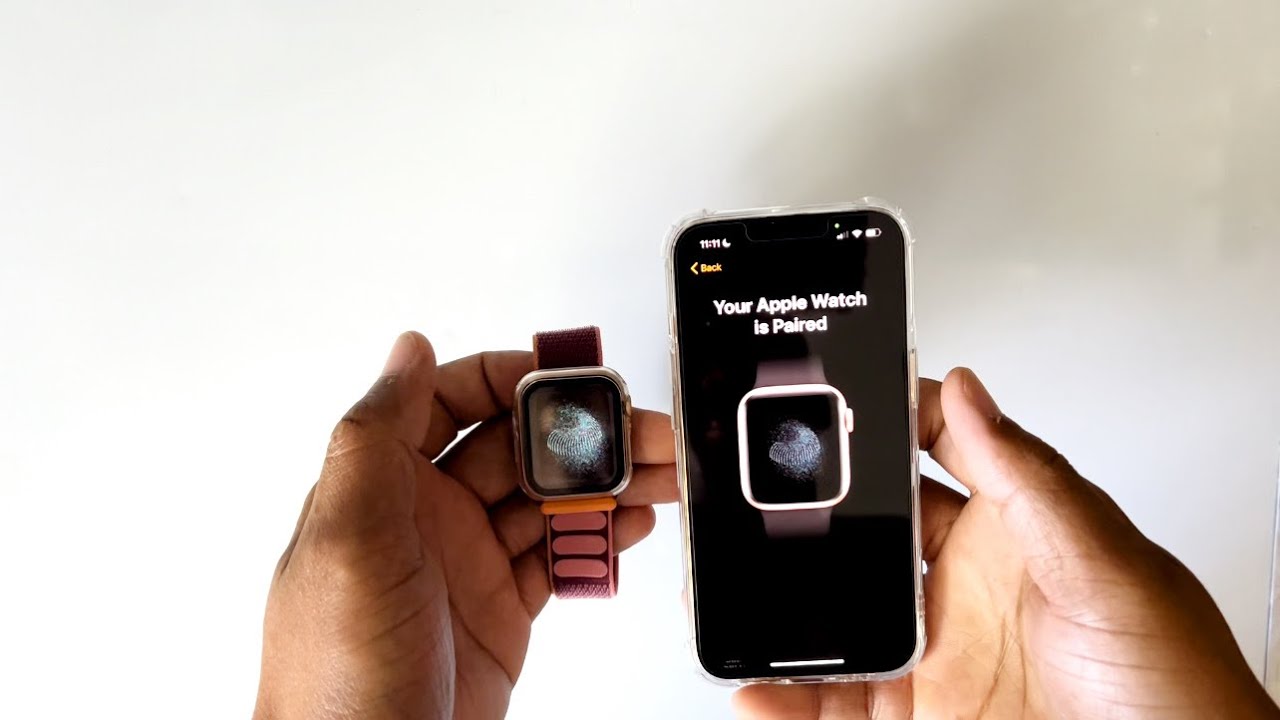Introduction
Setting fitness goals is an essential step towards achieving a healthier and more active lifestyle. With the Apple Watch, you have the perfect companion to track your physical activities and monitor your progress. One of the key features of the Apple Watch is the Move Goal, which serves as a daily activity target for users.
The Move Goal on the Apple Watch is based on the concept of “Active Calories,” which takes into account the calories you burn through movement and exercise. It provides a personalized and dynamic goal that adapts to your fitness level and daily routine. Meeting your Move Goal can contribute significantly to weight management, improved cardiovascular health, and overall well-being.
However, determining a “good” Move Goal can be a bit of a challenge. In this article, we will explore the factors to consider when setting a Move Goal, the benefits of setting a realistic goal, and tips to help you achieve it. Whether you are new to fitness or a seasoned athlete, finding the right Move Goal can keep you motivated and ensure you are making progress towards your health and fitness objectives.
Understanding Move Goals
The Move Goal on the Apple Watch is a daily activity target that encourages you to stay active and burn calories throughout the day. It is personalized based on your previous activity levels and adjusts over time to meet your fitness needs.
The Move Goal is measured in “Active Calories,” which are the calories you burn through movement and exercise. This includes activities like walking, running, biking, and even everyday tasks like climbing stairs or cleaning the house.
Apple Watch uses a combination of sensors, including the heart rate monitor and the built-in accelerometer, to track your activity levels accurately. By monitoring your heart rate and movement, it calculates the number of active calories you burn during the day and displays it in a visual format on your Watch face.
Setting a Move Goal is an effective way to stay motivated and accountable for your daily physical activity. It provides a sense of achievement when you successfully meet your goal and encourages you to push yourself a little bit more each day.
Remember that the Move Goal is separate from the Exercise Goal on your Apple Watch. While the Move Goal focuses on overall active calories burned, the Exercise Goal specifically tracks the time you spend engaged in moderate or high-intensity activities. Both goals work together to help you maintain a well-rounded fitness routine.
Factors to Consider
When setting your Move Goal on the Apple Watch, there are several factors to consider to ensure it is appropriate and achievable for your individual fitness level and lifestyle.
1. Current Activity Level: Take into account your current activity level and fitness routine. If you are just starting out or have a sedentary lifestyle, it is advisable to set a lower Move Goal initially and gradually increase it over time as your fitness improves.
2. Daily Routine: Consider your daily routine and the amount of time you have available for physical activity. If you have a job that involves a lot of sitting or have other time commitments, setting a more realistic Move Goal that aligns with your schedule will increase the chances of achieving it consistently.
3. Health Status: Consult with your healthcare provider if you have any underlying health conditions or concerns. They can provide guidance on setting a safe and suitable Move Goal that aligns with your overall health and well-being.
4. Long-Term Goals: Think about your long-term fitness goals and how the Move Goal fits into your overall plan. If your objective is weight loss or improving cardiovascular endurance, you may need to set a more challenging Move Goal to see significant progress over time.
5. Motivation and Enjoyment: Consider activities that you enjoy and find motivating. If you dislike running but love dancing, incorporating dance workouts into your routine can make achieving your Move Goal more enjoyable and sustainable.
6. Realistic Increment: Gradually increase your Move Goal in small increments. This allows your body to adapt and prevents overexertion or injury. It is better to consistently achieve a slightly lower Goal than to constantly fall short of a higher one.
Remember, the Move Goal is flexible and can be adjusted at any time. Reflecting on these factors and making small modifications as needed will help you set a Move Goal that is challenging yet achievable for your unique circumstances.
Setting Realistic Goals
Setting a realistic Move Goal is crucial to ensure that it is attainable and sustainable in the long run. Here are some tips to help you set a goal that works for you:
1. Start Small: If you are new to fitness or have been inactive for a while, it is important to start with a conservative Move Goal. Setting an unrealistic and challenging target from the beginning may lead to frustration or burnout. Begin with a goal that you are confident you can achieve consistently.
2. Listen to Your Body: Pay attention to your body’s signals and adjust your Move Goal accordingly. If you consistently reach your goal without much effort, consider increasing it gradually. On the other hand, if you find it difficult to meet your goal consistently or feel excessively tired, it may be an indication to reduce the intensity or duration of your activities.
3. Be Specific: Make your Move Goal specific to your needs and preferences. Instead of simply aiming for a certain number of active calories, consider incorporating specific activities or time-based goals. For example, you can set a goal to complete 30 minutes of brisk walking or to engage in a particular exercise class a certain number of times per week.
4. Keep It Realistic: Consider your daily commitments, work schedule, and other responsibilities when setting your Move Goal. Be honest with yourself and ensure that your goal is achievable within your available time and energy resources. Setting an unattainable goal may lead to discouragement and a loss of motivation.
5. Celebrate Milestones: Break down your Move Goal into smaller milestones and celebrate your achievements along the way. For example, if your ultimate goal is to reach 500 active calories per day, celebrate when you hit 250 calories or 400 calories. Acknowledging your progress and rewarding yourself can keep you motivated and engaged in your fitness journey.
Remember, the goal is to establish a sustainable and healthy routine. It’s better to set a modest Move Goal that you can consistently achieve than to set a high goal that becomes overwhelming or unmanageable. Over time, as your fitness level improves, you can gradually increase your Move Goal to continue challenging yourself and making progress towards your fitness goals.
Benefits of Setting a Good Move Goal
Setting a good Move Goal on your Apple Watch can have numerous benefits for your physical and mental well-being. Here are some key advantages:
1. Increased Physical Activity: A Move Goal keeps you motivated and accountable to engage in daily physical activity. It encourages you to be more conscious of your movement throughout the day, whether it’s taking the stairs instead of the elevator, going for a walk during your lunch break, or participating in a workout session. By setting a Move Goal, you are more likely to incorporate regular exercise into your routine, leading to increased physical activity levels.
2. Weight Management: Regular physical activity, as encouraged by the Move Goal, plays a vital role in managing weight. By burning calories through exercise and movement, you can create a calorie deficit that helps maintain a healthy weight or aids in weight loss. Additionally, achieving your Move Goal consistently can improve your metabolism, making it easier to manage your weight in the long run.
3. Improved Cardiovascular Health: Engaging in moderate and high-intensity activities, as tracked by the Move Goal, can strengthen your heart and improve cardiovascular health. Regular exercise helps lower blood pressure, reduce the risk of heart disease, and improve overall cardiovascular endurance. By setting and achieving a Move Goal that challenges your cardiovascular system, you are taking proactive steps towards improving your heart health.
4. Mood Enhancement: Physical activity is known to boost mood and mental well-being. When you engage in exercise, your body releases endorphins, which are natural mood-elevating chemicals. Meeting your Move Goal and experiencing the sense of achievement that comes with it can contribute to reduced stress levels, increased energy, and improved overall mental health.
5. Long-Term Habit Formation: By consistently striving to achieve your Move Goal, you are establishing a regular exercise routine. Over time, this routine becomes a habit, making it easier to maintain an active lifestyle. Setting and meeting your Move Goal regularly reinforces positive behavior and increases your commitment to long-term fitness and well-being.
Remember, the benefits of setting a Move Goal extend beyond physical health. It also positively impacts other areas of your life, including mental clarity, productivity, and overall quality of life.
Tips to Achieve Your Move Goal
Achieving your Move Goal on a consistent basis requires dedication and mindful effort. Here are some tips to help you stay on track and reach your target:
1. Break It Down: Divide your Move Goal into smaller, manageable segments throughout the day. This can help make it less overwhelming and more achievable. Aim to reach a certain number of active calories or complete a specific amount of exercise during different parts of the day, such as morning, afternoon, and evening.
2. Move Regularly: Incorporate movement into your daily routine. Take short breaks during work to stretch and walk around. Choose active transportation when possible, such as walking or biking instead of driving. Look for opportunities to move and be active throughout the day to accumulate those active calories.
3. Find Activities You Enjoy: Engage in activities that you genuinely enjoy. Whether it’s dancing, cycling, swimming, or playing a sport, choose activities that you find fun and fulfilling. When you enjoy the workout or physical activity, it becomes easier to stay committed and motivated to achieve your Move Goal.
4. Mix It Up: Avoid getting stuck in a routine by diversifying your activities. Try different types of exercises, such as cardio, strength training, and flexibility exercises. This not only keeps your workouts interesting but also helps work different muscle groups and improves overall fitness.
5. Set Reminders: Utilize your Apple Watch’s reminder feature to stay mindful of your Move Goal. Set reminders throughout the day to prompt you to move or engage in physical activity. These gentle nudges can serve as a regular reminder to keep you focused on achieving your Move Goal.
6. Join Challenges and Communities: Participate in fitness challenges on your Apple Watch or join online fitness communities to stay motivated and connected with like-minded individuals. Challenges provide a friendly competitive environment that encourages you to push yourself and stay committed to achieving your Move Goal.
7. Track Your Progress: Monitor your daily activity and progress towards your Move Goal using the Apple Watch’s Activity and Health apps. This allows you to see how close you are to achieving your goal, analyze patterns in your activity levels, and make adjustments as needed. Tracking your progress can be a great source of motivation and helps you stay accountable.
8. Stay Consistent: Consistency is key when it comes to achieving your Move Goal. Aim to engage in physical activity and work towards your goal every day, even on rest days. Maintaining a consistent routine helps build healthy habits and increases the likelihood of long-term success.
Remember, every step and every active calorie counts towards reaching your Move Goal. Stay committed, stay motivated, and celebrate your achievements along the way. With determination and a positive mindset, you can make consistent progress towards a healthier and more active lifestyle.
Monitoring Your Progress
Monitoring your progress towards your Move Goal is essential to stay on track and make necessary adjustments to your routine. The Apple Watch provides several tools and features to help you track and analyze your activity levels:
1. Activity Rings: The Activity Rings on your Apple Watch serve as a visual representation of your daily progress towards your Move Goal. The Move ring shows the number of active calories you have burned throughout the day. Aim to close this ring by reaching your Move Goal. The Exercise and Stand rings track the time spent on moderate to high-intensity activities and standing, respectively.
2. Activity App: The Activity app on your iPhone provides a comprehensive overview of your daily, weekly, and monthly activity. It displays detailed information about your Move Goal, active calories burned, exercise minutes, and more. You can analyze trends, set new goals, and track your progress over time through the app.
3. Workouts: The Apple Watch includes a variety of workout tracking features, such as GPS tracking, heart rate monitoring, and specific exercise recognition, to help you accurately track your workouts. By selecting the appropriate workout type, you can gain insights into your exercise intensity and the number of active calories burned during each session.
4. Health App: The Health app on your iPhone consolidates all your health and fitness data in one place, including activity, heart rate, and sleep. It provides a holistic view of your overall health and allows you to analyze patterns and trends over time. You can even share your data with healthcare professionals if desired.
5. Challenges and Achievements: Engaging in challenges and earning achievements through the Activity app can be an excellent way to track and celebrate your progress. From weekly challenges to special event challenges, these virtual competitions enable you to stay motivated and monitor your performance against others.
Regularly monitoring your progress not only helps you understand your activity patterns but also serves as a source of motivation. It allows you to celebrate your milestones, make informed adjustments to your routine, and stay accountable to your Move Goal.
Remember, monitoring your progress should not be a source of pressure or stress. It should be a tool to guide and support your fitness journey. Embrace the data and insights provided by your Apple Watch, but also listen to your body and prioritize your overall well-being.
Adjusting Your Move Goal
As your fitness level improves and your routine changes, you may find it necessary to adjust your Move Goal on the Apple Watch. Here are some factors to consider and steps to follow when it comes to modifying your Move Goal:
1. Assess Your Progress: Take a moment to evaluate your current activity level and progress towards your Move Goal. Are you consistently meeting your goal without much effort? Or are you consistently falling short and finding it challenging to achieve? Understanding where you currently stand will help you determine if an adjustment is necessary.
2. Gradual Increments: If you decide to increase your Move Goal, do so in small increments. A sudden drastic increase may lead to overexertion or discourage you from continuing. Gradual adjustments allow your body to adapt and make steady progress towards a higher goal.
3. Listen to Your Body: Pay attention to how your body feels during and after physical activity. If you consistently feel exhausted, fatigued, or experience any pain or discomfort, it may be a sign that your Move Goal is too high. Be mindful of your body’s signals and adjust your goal accordingly to avoid injury and burnout.
4. Adjust According to Lifestyle Changes: Life circumstances and routines can change over time. If you experience significant changes like starting a new job, going on vacation, or recovering from an illness or injury, it may be necessary to temporarily adjust your Move Goal to align with your current capabilities and limitations.
5. Consult with Professionals: If you have specific fitness goals or underlying health conditions, it can be beneficial to seek guidance from fitness professionals or healthcare providers. They can help assess your individual needs and provide recommendations for adjusting your Move Goal safely and effectively.
6. Track Progress and Reassess: After adjusting your Move Goal, continue to monitor your progress and reassess periodically. Use the tracking features of your Apple Watch and review your activity data through the Activity app. This will allow you to see if the new goal is still challenging enough or if further adjustments are needed.
Remember, the Move Goal should be a challenging yet achievable target that keeps you motivated and engaged in your fitness journey. Adjusting your goal as needed ensures that it remains relevant and reflective of your current fitness level and goals.
Conclusion
The Move Goal feature on the Apple Watch is a powerful tool that can help you stay active, improve your fitness, and achieve a healthier lifestyle. By setting a realistic and personalized Move Goal, you can stay motivated, track your progress, and make positive changes to your physical well-being.
Understanding the factors that influence your Move Goal, such as your current activity level, daily routine, and long-term goals, allows you to set a target that is both challenging and achievable. Monitoring your progress through the Activity Rings, tracking your workouts, and utilizing the Health app empowers you to stay on track and make necessary adjustments along the way.
To achieve your Move Goal, it is important to incorporate regular physical activity into your daily routine, find activities you enjoy, and embrace gradual progress. The Apple Watch’s reminders, challenges, and achievements provide additional motivation and support to help you stay committed and make consistent progress.
Remember that the Move Goal is a flexible feature and can be adjusted as needed. Listen to your body, consult with professionals if necessary, and make modifications that align with your capabilities and goals. This will ensure a sustainable and effective fitness journey.
In conclusion, setting and achieving a good Move Goal on your Apple Watch can lead to numerous benefits, including increased physical activity, improved cardiovascular health, weight management, and enhanced mood and mental well-being. By using the tips and strategies outlined in this article, you can make meaningful progress towards your Move Goal and pave the way for a healthier and more active lifestyle.







